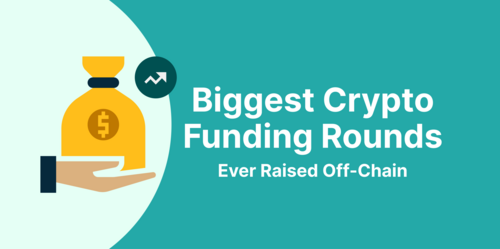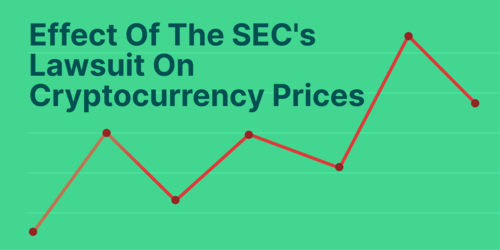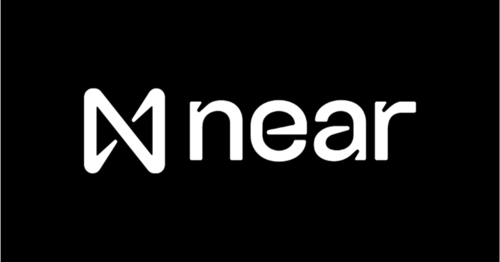However, things seem to be picking up for NEAR - with its native token $NEAR among the more resilient assets in an otherwise bearish and sideways market at the start of Q1 2022 (before the entire market went tumbling). NEAR Protocol has been drawing comparisons with the likes of Ethereum 2.0, Solana, and even ‘Layer-0’ chains like Polkadot and Cosmos due to its scalability and low transaction fees. So what is NEAR Protocol, and how do these comparisons measure up?
What Is NEAR Protocol?
NEAR Protocol is a sharded, delegated proof-of-stake blockchain with the same smart contract functionality we see in other popular Layer 1 chains. NEAR was founded in 2018 by former Microsoft software developer Alexander Skidanov and former engineering manager at Google Research, Ilya Polosukhin. The project has also raised over $200m USD from prominent venture capital funds such as Three Arrows Capital, a16z, Dragonfly Capital, Coinbase Ventures, and more. Core maintenance, governance, and ecosystem funding of the NEAR Protocol is led by the NEAR Foundation, a non-profit organization based in Switzerland, while the team at NEAR Inc, a US-based R&D company, continues to propose iterations to the reference codebase of the NEAR blockchain.
NEAR attempts to tackle the blockchain trilemma of security, scalability, and decentralization by combining and reiterating on the best features of other chains, on top of having a strong focus on user and developer friendliness as well as interoperability. In this section, we’ll take a look at its usability, sharding architecture, and interoperability.
Usability
NEAR has the goal of achieving meaningful mainstream adoption. It is evident that the NEAR team believes that usability is a crucial factor for determining a project’s potential for mass adoption. Otherwise, why the need for higher computational throughput?
As a result there is a distinctly strong focus on user-friendliness which differentiates NEAR from other Layer-1 chains available. The experience of using NEAR is designed to be more similar to the experience of using typical Web2 applications, with many of the technical blockchain aspects abstracted away until the user is ready to learn more about them. A few examples include;
-
Default human-readable addresses (e.g. address.near)
-
User-friendly web wallet; no extensions needed, with option to set up / recover account via email or mobile for convenience (can be disabled)
-
Low transaction fees; typically <$0.01 USD
-
Fast transactions; 2s finality
-
Gasless Layer-2 Aurora
For a chain to thrive, it needs to be inviting not only to users, but also to developers. NEAR has a number of developer-friendly features, such as:
-
Protocol-level royalty function; 30% of fees channeled to creator of smart contract
-
NEAR University; enroll in free courses to become a NEAR Certified Developer and receive NFT certifications upon completion
-
Compatible with EVM, Rust, and WASM to cater to as large a group of developers as possible
-
$800m ecosystem fund to seed and support new projects
Sharding Architecture
Under the hood, NEAR is implementing unique consensus and scaling mechanisms in an attempt to combine the best features of different chains, while solving the stubborn problems which plague them.
NEAR features sharding as its solution to scaling its blockchain. Sharding is a technique used to split a single dataset across multiple databases, allowing for parallel processing and a more balanced distribution of the network according to the computational resources available. This is similar to what is on the Eth2.0 roadmap.
However in contrast to Eth2.0’s proposed design which will split the blockchain into 64 shards, Near will instead implement Nightshade, which is their own novel take at sharding. Nightshade is designed to enable ‘dynamic resharding’ – having no cap on the number of shards, while at the same time being able to create and merge shards according to the computational needs required by the network at any given time. In theory, this would make NEAR’s transaction throughput able to scale higher than Ethereum 2.0, whose throughput comes in at about 100k TPS.
The Nightshade dynamic sharding architecture works hand-in-hand with its block generation mechanism. Simply put, each shard will have a maximum of 100 validator seats, where the amount of NEAR tokens staked to secure a seat and to produce blocks for one of the shards is proportional to the total amount of tokens staked by all the validators in a particular shard. The cost to secure a validator seat rises as more validators join the shard. This design incentivises validators to become nodes for newer and smaller shards due to the lower barrier to entry, thus promoting the distribution of computation whenever shards get too large.
Important to note however that Nightshade has only currently completed Phase 0 i.e. ‘Simple Nightshade’, which has four shards and ~3,000 TPS throughput. The details of the different phases of Nightshade will be covered later in this article.
Interoperability
While NEAR runs its own virtual machine and hence possesses its own developer environment, languages, and tools, several components in its ecosystem make NEAR compatible with other popular chains.
Aurora
Aurora is an EVM built by the NEAR Protocol team on the NEAR blockchain. Aurora is unique in that it is a blockchain which runs as a smart contract on the NEAR blockchain. While the technical aspects of this feature is beyond the scope of this article, it essentially means that Aurora provides an Ethereum-Layer-2-like experience for both users and developers on NEAR.
Aurora is fully interoperable with Ethereum and all its different wallets and tools – allowing Ethereum developers to work in a familiar environment but with the advantage of the superior scalability and super-low-cost transactions offered by NEAR. While the base fee is technically denominated and paid in ETH, gas is currently subsidized, making transactions on Aurora gasless. Yes, you read that right – it is currently completely free to use Aurora.
Users can utilize the trustless Rainbow Bridge on Aurora for bidirectional transfers of Ethereum assets onto Aurora / NEAR.
Octopus Network
Another project building on NEAR which further increases NEAR’s multi-chain interoperability is Octopus Network. Octopus Network is an open, permissionless multichain interoperable network for launching Substrate-based appchains (i.e app-specific blockchains), similar to Polkadot’s design. Octopus Network cites NEAR’s advantages in speed, affordability, and scalability as compared to Cosmos or Polkadot as reasons why they’ve decided to build on the NEAR blockchain.
Unlike Polkadot which has a maximum of 100 parachains, there is no limit on appchains which are able to be built on Octopus Network. Appchains can also decide on how much security they are willing to pay for, allowing for more flexibility to increase security as the app grows, and decreasing the barrier of entry for developers to bootstrap a new project. Appchains launched on the Octopus Network enjoy interoperability with NEAR, Ethereum, as well as any IBC (Inter-Blockchain Communication) enabled blockchains.
Aside from Aurora and Octopus Network, the NEAR team is also actively seeking cross-chain partnerships. Recently, NEAR partnered with Ardana (essentially the MakerDAO of Cardano) to build a bridge between the two blockchains. NEAR has also secured a partnership with Terra via NearPad and Rose to bring deeper UST liquidity into the NEAR / Aurora ecosystem.
Near Ecosystem Metrics
Most of NEAR’s key ecosystem metrics, such as total value locked and daily transactions have seen an uptick recently and are on a steady uptrend. According to Defillama, NEAR has a TVL of slightly over $900M as of January 17th. As Aurora runs as a smart contract on NEAR, TVL on Aurora is also included in this metric.
NEAR TVL. Source: Defillama
Aurora TVL. Source: Defillama
The main protocols contributing to TVL are the AMM DEXs (Automated Market Maker Decentralized Exchanges) on their respective chains - Trisolaris on Aurora, and Ref Finance on NEAR.
Ethereum bridges TVL. Source: Dune Analytics @eliasimos *snapshot taken 17 January
Transfers of ERC-20 tokens to the NEAR blockchain also saw a recent uptick, with the Rainbow Bridge weekly TVL percentage change at +163%, far ahead of the other bridges.
Daily number of new accounts. Source: https://explorer.mainnet.near.org/stats *snapshot taken 17 January
Daily number of transactions. Source: https://explorer.mainnet.near.org/stats *snapshot taken 17 January
Daily creation of new accounts also recently saw a significant spike to almost 400 thousand, along with a stepwise increase in daily transactions to over 1 million after a slow trend up from Q4 2021.
Current Challenges with NEAR
While NEAR boasts fast transactions and low fees, it lacks decentralization. According to the NEAR mainnet explorer, the NEAR blockchain currently has 89 validators.
Although there is technically no minimum stake to become a validator, there is a threshold which depends on the total amount staked by the other validators present. Currently, the threshold sits at just over 60,000 NEAR tokens, which equates to almost $900,000 at time of writing.
This cost represents a high barrier to entry. Though delegation of any amount is possible, this also does not address the problem of centralisation as the top nodes which hold the most stake still have outsized share of the network. The top 6 nodes now cumulatively own over 33% of the total NEAR staked.
The NEAR token is also notably absent from US exchanges despite being listed on most other major exchanges. This presents an obstacle for users and investors from the US where a large number of crypto early adopters reside.
While there has been an uptick in daily transactions and newly created accounts on NEAR, the several dozen or so live dApps available are still comparatively few relative to both NEAR’s market capitalization and the 250+ projects which are officially listed as building on NEAR / Aurora. A look at some of the websites of these dApps suggest that they are in their earlier stages of development, and time will tell if network usage increases to desirable levels in the near future.
Furthermore, the most active dApps with the most users seem to reside on Aurora. As per the chart above, Aurora contains >80% of NEAR’s total TVL. While Aurora leverages the architecture of NEAR for security and scalability and is not meant to compete with it, having most of the adoption happening on Aurora somewhat diminishes the impact of the features and dApps implemented on NEAR itself. For example all the nice usability features for non-crypto-native users on NEAR are somewhat redundant as interacting with Aurora still requires EVM wallets such as Metamask. While some of the dApps on NEAR may have greater utility and importance in terms of cross-appchain transactions in the future, it will only really emerge when more appchains are implemented (perhaps via Octopus Network). For now, Aurora, perhaps somewhat ironically, remains the biggest draw for users to NEAR.
However it should be noted that similar to Solana, which has managed to attract a sizable number of project developers, NEAR is also coded in Rust. Unlike Solidity, there is already a large existing community of Rust developers long before Web3. While the EVM-based Aurora is being used to attract Solidity developers to simply port over their EVM-based apps (Neon Labs is now attempting the same on Solana), NEAR (and Solana) are making efforts to woo the Rust developer community to get onboard and build on their respective chains. As mentioned above, NEAR has put together a generous $800M ecosystem fund that could serve as a major incentive to attract Rust developers onto NEAR.
NEAR Protocol Roadmap
Fortunately, plans to further scale and increase decentralization exist in NEAR’s roadmap. The main upgrades relate to the implementation of the various phases of Nightshade, which relate to its endgame of dynamic resharding and increasing validator nodes.
Nightshade is planned to be deployed in stages 0 – 3.
1. Phase 0 – Simple Nightshade [Launched November 15th 2021]
Focus is on increasing network throughput. Network split into 4 shards, with validators still having to track all shards to maintain security. Throughput of the network significantly increased to 800-1000 TPS per shard.
2. Phase 1 – Chunk-Only Producers [Launched November 17th 2021]
This phase focuses on increasing decentralization by introducing chunk-only producers (i.e. validators who only validate chunks of a specific shard). Due to the lower computing requirements, there is no need for expensive hardware as these nodes will not be responsible for producing blocks or approvals.
Completion of Phase 1 results in 200-400 validators where only the block producers require higher hardware requirements.
3. Phase 2 – Nightshade [Q3 2022]
Aims to increase accessibility for validators. This phase will eliminate the need for validators to track all shards. Completion of this phase results in the full sharding of both state and processing of the blockchain. This phase also further decreases the hardware requirements for block producers on NEAR.
4. Phase 3 – Dynamic resharding [Q4 2022]
Focus is on delivering endgame of almost-infinite, dynamic resharding for NEAR. While completion of Phase 2 will result in a sharded mainnet of fixed shards, Phase 3 unlocks the ability of dynamic resharding – the splitting and merging of shards based on resource utilization. This removes the ceiling for scaling, as well as increases resiliency of the network to usage spikes.
Closing Thoughts
As we can see from NEAR’s aggressive roadmap for Nightshade, expectations have been set high. Time will tell if the NEAR team is able to deliver their roadmap according to schedule, or if the project will face similar hurdles and delays as the long-awaited Ethereum 2.0.
In its current form, NEAR’s dApp ecosystem is still in its nascent stages and some improvements on decentralization still need to be made, which hopefully will be addressed in its upcoming upgrades. However, even now NEAR differentiates by prioritizing usability, resulting in features such as their web wallet and default human-readable addresses which stand out in terms of user-friendliness when compared to other chains right out of the box.
In the coming months, it will be crucial for NEAR to further decentralize in order to gain legitimacy in the eyes of the crypto community. Getting listed on more exchanges will also help the chain gain more awareness and exposure amongst users and investors. It may be also worth mentioning that NEAR is certified by South Pole to be carbon-neutral, which may be an attractive factor in the eyes of ESG investors.
With so much to unpack, we’ll be sure to cover key components of NEAR’s ecosystem, such as Aurora, Octopus Network, as well as onboarding tutorials in their own standalone articles in due time.
Watch Our Video Guide

Wendy is a research intern at CoinGecko. Follow the author on Twitter @alfalfawm















 Or check it out in the app stores
Or check it out in the app stores